#maria de la torre
Explore tagged Tumblr posts
Text














Women in Blue / Las Azules (2024–) | Season 1, Episode 1 | Bárbara Mori as María de la Torre
“I was obsessed with detectives as a little girl. I devoured every book I could find. My favorite series was Detective Murrieta. On the cover art, I'd add long hair and a skirt. Detective María.”
#📣 new blorbo unlocked uh-oh#two episodes in and i'm already so invested in the story#maria's reaction at the wine pour is such a mood#women in blue#women in blue 2024#las azules#barbara mori#maria de la torre#appletvsource#myedits#mygifs#dailytvwomen#dailytvsource#dailytvedit#dailywomen#dailywomansource#dailyfemale#currently watching#womensource#brunettesource#thrillers#crime shows#tv show recommendations#femalesource#dailyactresses#apple tv series#dailywomanedit
39 notes
·
View notes
Text
Hi, I'm new here, but I will dedicate myself to make chica vampiro content: aus, fanfics, headcanons hehe

#chica vampiro#mirco vladimoff#julieta vladimoff#Catalina Vladimoff#daisy o'brian#ulises o'brian#Ana Mclaren#Maria Mclaren#Dracula#Max de la Torre#Chica Vampiro Netflix
3 notes
·
View notes
Text
Il 1979, l'anno che porterà la Sicilia a fermarsi dalla sua estenuante fuga dalla realtà
La mafia non ha mai risparmiato alcun individuo, si è formata e si è incuneata all’interno della Sicilia senza abbandonare nessuno, anzi, accogliendo come figli tutti i siciliani. L’omertà era il denominatore comune, il costume che i siciliani – quasi convintamente e fieramente – indossavano, abbandonando la ragione e rinchiudendola in un sonno profondo. La mente del siciliano era ipnotizzata,…
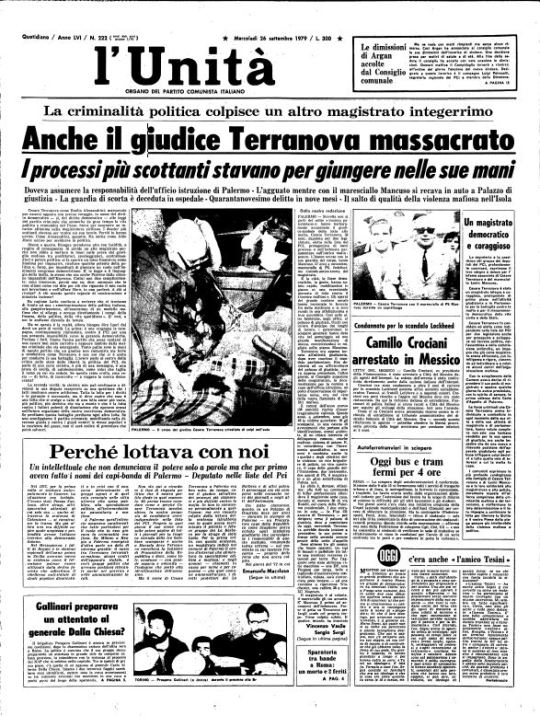
View On WordPress
#1979#Alessandro Maurizio Alaimo#Bernardo Provenzano#Boris Giuliano#Cesare Terranova#corleonesi#Cosa Nostra#critica#Giovanni Falcone#giudice#Lenin Mancuso#Leoluca Bagarella#Leonardo Sciascia#Luciano Leggio#mafia#Maria De Laurentiis#narcotraffico#Palermo#Pio La Torre#polizia#processi#sicilia#stampa#Tommaso Buscetta#Totò Riina#tribunale#vittime
0 notes
Text
Il 1979, l'anno che porterà la Sicilia a fermarsi dalla sua estenuante fuga dalla realtà
La mafia non ha mai risparmiato alcun individuo, si è formata e si è incuneata all’interno della Sicilia senza abbandonare nessuno, anzi, accogliendo come figli tutti i siciliani. L’omertà era il denominatore comune, il costume che i siciliani – quasi convintamente e fieramente – indossavano, abbandonando la ragione e rinchiudendola in un sonno profondo. La mente del siciliano era ipnotizzata,…

View On WordPress
#1979#Alessandro Maurizio Alaimo#Bernardo Provenzano#Boris Giuliano#Cesare Terranova#corleonesi#Cosa Nostra#critica#Giovanni Falcone#giudice#Lenin Mancuso#Leoluca Bagarella#Leonardo Sciascia#Luciano Leggio#mafia#Maria De Laurentiis#narcotraffico#Palermo#Pio La Torre#polizia#processi#sicilia#stampa#Tommaso Buscetta#Totò Riina#tribunale#vittime
0 notes
Text
please, repost and help with the diffusion of this post!!!!
hey so probably not a lot of you are aware of what's going on in Valencia (Spain) right now , and we're going through some really bad meteorological conditions (know as DANA) which paired with the government's late actions have caused A LOT of people to be victims of floods.



as of now, around 160 people have been declared dead and there are uncountable missing people. the situation is critical, many people from the municipalities around Valencia (paiporta, alfafar, sedaví, xiva, benetusser, catarroja, silla, la torre... and more) don't have running water or electricity. hundreds of animals are being transported however possible since shelters have been destroyed. people are starving unable to drink water, and incommunicated. everyone around here is trying to help, but for now, the accesses are cut and we can't go physically help them, we can only donate things they need.
DONATIONS/GOFUNDME
these are some links to help the victims of this situation and the future reconstruction of this huge area that has been destroyed
https://www.gofundme.com/f/una-copa-por-valencia?qid=4d79e2c673dc9f2024b6d8acb47953ca
https://www.gofundme.com/f/ayuda-damnificados-por-el-dana-en-valencia?qid=4d79e2c673dc9f2024b6d8acb47953ca
this link is specifically to help animal shelters that have been wrecked and are in a critical situation
https://www.gofundme.com/f/ayudemos-a-el-refugio-de-maria-tras-la-dana?qid=4d79e2c673dc9f2024b6d8acb47953ca
INFORMATION/DIFFUSION
this is an instagram account which reports missing people around here
https://www.instagram.com/desaparecidosdanavlc?igsh=MXIzcmFlbmZ2MmF6ZA==
this account is trying to find specific help for people who need it using help forms
https://www.instagram.com/suportmutudana?igsh=MXF6YXFtNTl1dGQ2bg==
I'll try to update more resources about the situation and links where you can donate whenever i can although im pretty busy since im doing stuff around here too.
thank you for reading, please, spread the word! <3
#boost#please boost#valencia#spain#dana#valencia dana#valencia spain#pls help#floods#gofundme#go fund them#boost this#diffusion#reblog if possible#help#donations#animal shelters#we need help
669 notes
·
View notes
Note
bon dia!! I'm moving to Catalunya this fall to be an English teacher's assistant and I'm so so excited to learn catalan and explore your beautiful country 💗 Do you have any recommendations for places or activities around the Lleida región? Moltes gràcies ☺️
Bon dia!
In Lleida (the city itself), the most iconic site to visit is the Seu Vella (old cathedral). It's a Medieval cathedral that was also used as a stronghold in war in the Early Modern Period. It's located on top of a hill, so there's great views of the whole city from there.

(Photo)
A natural place: the Congost de Mont-rebei (Mont-rebei Canyon). This is the river that is used as the administrative dividing line between Catalonia on East and Aragon in the West (La Franja). It's a very beautiful place, but I don't know what it's like now with the drought. There's a very nice walk near the La Pertusa chapel and in an excavated part of the rock walls so you can see the river. Many people also go kayaking or similar things but I don't know if there's enough water now. (For context, we're having a very bad drought, it has barely rained in 3 years and all the reservoirs are practically empty).

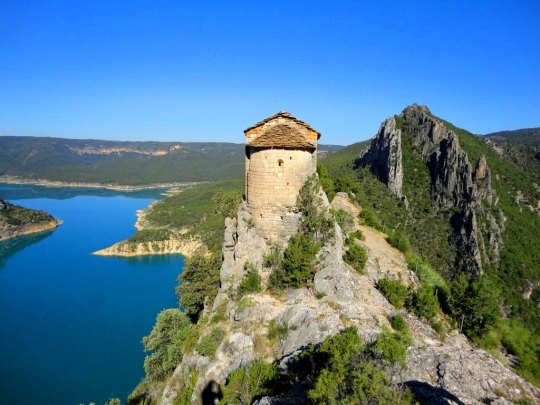
(Photo 1 / Photo 2)
In spring, it's also very pretty to see the fruit tree fields around Lleida. The most popular town to go to is Aitona, but you can also see it in Seròs, Alcarràs, Torres de Segre, and others.
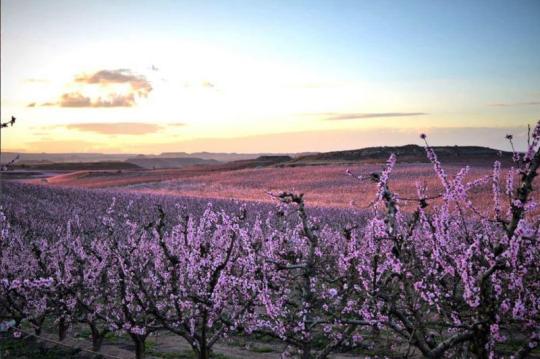
(Photo)
Some historical small towns near Lleida that are nice to visit include Vallbona de les Monges with its Medieval monastery, and the towns around the Riucorb river (I would recommend the town Guimerà, and also Verdú to visit its tower), Montfalcó Murallat is also nice but very small. For a bigger town: Cervera. It's interesting to see the university building in Cervera, when Philip V (Spanish king who conquered Catalonia in 1714) made all the universities in Catalonia, Valencia, Mallorca and Aragon close down, he only allowed 1 university, which he moved to Cervera because it was a city where many people had supported him in the war and because it was in a rural area so he could closely control the students (university students in Barcelona and other places had been very involved in the war against Philip V).

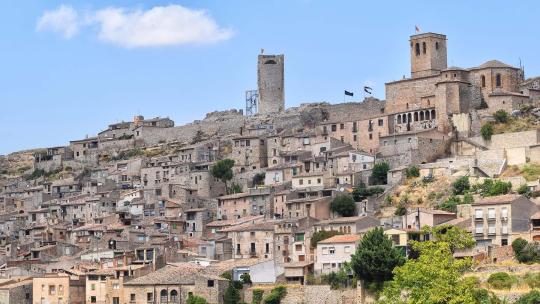
(Photo 1: Santa Maria de Vallbona monastery. Photo 2: Guimerà)
An archaeological site: Fortalesa dels Vilars in Arbeca. This was a fortress inhabited between 775 and 300 BC, you can visit the archaeological site and the museum with the objects found. Arbeca is also famous for its olives (called arbequines), definitively worth a try 😋🫒 you'll find them in most markets and supermarkets.

(Photo)
If you're near, when it comes to archaeology, there are also some prehistorical rock art sites. The most well-known in the area is the wall La roca dels moros in Cogul.

(Photo 1)
Those are the places I'd recommend closest to Lleida. If you can move more, I also really recommend going up to the Pyrenees mountains (in the north of the Lleida province). There's lots of Medieval architecture there, lots of cute villages and some wonderful natural parks.
The bad thing about the Lleida area is that it doesn't have as good public transport as more densely populated areas, because outside of Lleida city itself it's very rural. So you might have to rely on cars.
Another activity in Lleida: the most famous food from there is snails, there are different recipes, the most widespread is caragols a la llauna, but they also serve them with allioli or with vinaigrette. There's also many other delicious foods, but that is what most people associate with Lleida the most.
Aaand that's what comes to mind in the areas near Lleida. I'm not from that province so I don't know it as well as other areas, if someone reading this has more recommendations please feel free to add them in the reblogs or comments.
I hope you enjoy your time in Catalonia!
68 notes
·
View notes
Text
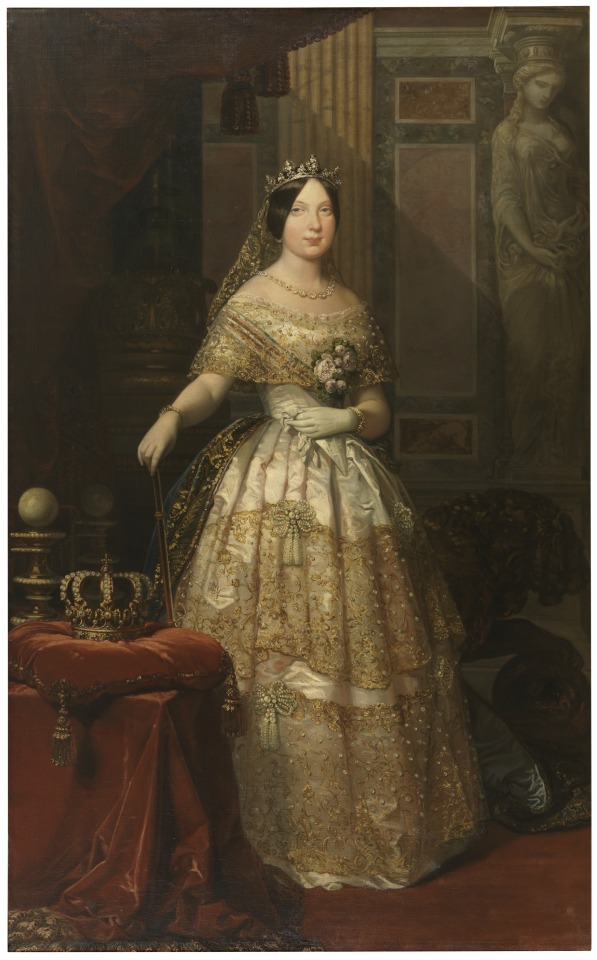
Isabella II
Artist: Federico de Madrazo y Kuntz (Spanish, 1815-1894)
Date: 1848
Medium: Oil on canvas
Collection: Museo Nacional del Prado, Madrid, Spain
Isabella II
Isabella II (Spanish: Isabel II, María Isabel Luisa de Borbón y Borbón-Dos Sicilias; 10 October 1830 – 9 April 1904) was Queen of Spain from 1833 until her deposition in 1868. She is the only queen regnant in the history of unified Spain.
Isabella was the elder daughter of King Ferdinand VII and Queen Maria Christina. Shortly before Isabella's birth, her father issued the Pragmatic Sanction to revert the Salic Law and ensure the succession of his firstborn daughter, due to his lack of a son. She came to the throne a month before her third birthday, but her succession was disputed by her uncle Infante Carlos (founder of the Carlist movement), whose refusal to recognize a female sovereign led to the Carlist Wars. Under the regency of her mother, Spain transitioned from an absolute monarchy to a constitutional monarchy, adopting the Royal Statute of 1834 and Constitution of 1837.
Isabella was declared of age and began her personal rule in 1843. Her effective reign was a period marked by palace intrigues, back-stairs and antechamber influences, barracks conspiracies, and military pronunciamientos. Her marriage to Francisco de Asís, Duke of Cádiz was an unhappy one, and her personal conduct as well as rumours of affairs damaged her reputation. In September 1868, a naval mutiny began in Cadiz, marking the beginning of the Glorious Revolution. The defeat of her forces by Marshal Francisco Serrano, 1st Duke of la Torre, brought her reign to an end, and she went into exile in France. In 1870, she formally abdicated the Spanish throne in favour of her son, Alfonso. In 1874, the First Spanish Republic was overthrown in a coup. The Bourbon monarchy was restored, and Alfonso ascended the throne as King Alfonso XII. Isabella returned to Spain two years later but soon again left for France, where she resided until her death in 1904.
#portrait#queen isabella ii#queen of spain#painting#full length#standing#interior#house of bourbon#spanish monarchy#spanish royal family#royal costume#gold lace#royal crown#lace veil#table#tiara#necklace#statue#jewelry#oil on canvas#fine art#oil painting#artwork#spanish queen#french culture#french art#federico de madrazo y kuntz#spanish painter#european art#19th century painting
24 notes
·
View notes
Text
May I add the group of Las Sinsombrero:
• Maria Zambrano (1904- 1991)
• Rosa Chacel ( 1898-1994)
• Margarita Manso ( 1908 -1960)
• Maruja Mallo (1902- 1995)
• Josefina de la Torre (1907−2002)
• Maria Teresa León (1903-1988)
• Concepción Méndez Cuesta ( 1898- 1986)
• Luisa Carnés (1905 - 1964)
• Rosario de Velasco (1904- 1991)
• Marga Gil Roësset (1908 - 1932)
• Delhy Tejero (1904 –1968)
• Remedios Varo (1908 – 1963),
• Ángeles Santos (1911- 2013)
Generation of 27
The Generation of ‘27 (Spanish: Generación del 27) was an influential group of poets that arose in Spanish literary circles between 1923 and 1927, essentially out of a shared desire to experience and work with avant-garde forms of art and poetry. Their first formal meeting took place in Seville in 1927 to mark the 300th anniversary of the death of the baroque poet Luis de Góngora. Writers and intellectuals paid homage at the Ateneo de Sevilla, which retrospectively became the foundational act of the movement.
Terminology:
The Generation of ‘27 has also been called, with lesser success, “Generation of the Dictatorship”, “Generation of the Republic”, “Generation Guillén-Lorca” (Guillén being its oldest author and Lorca its youngest), “Generation of 1925” (average publishing date of the first book of each author), “Generation of Avant-Gardes”, “Generation of Friendship”, etc. According to Petersen, “generation group” or a “constellation” are better terms which are not so much historically restricted as “generation”.
Aesthetic style:
The Generation of '27 cannot be neatly categorized stylistically because of the wide variety of genres and styles cultivated by its members. Some members, such as Jorge Guillén, wrote in a style that has been loosely called jubilant and joyous and celebrated the instant, others, such as Rafael Alberti, underwent a poetic evolution that led him from youthful poetry of a more romantic vein to later politically-engaged verses.
The group tried to bridge the gap between Spanish popular culture and folklore, classical literary tradition and European avant-gardes. It evolved from pure poetry, which emphasized music in poetry, in the vein of Baudelaire, to Futurism, Cubism, Ultraistand Creationism, to become influenced by Surrealism and finally to disperse in interior and exterior exile following the Civil Warand World War II, which are sometimes gathered by historians under the term of the “European Civil War”. The Generation of '27 made a frequent use of visionary images, free verses and the so-called impure poetry, supported by Pablo Neruda.
Members:
In a restrictive sense, the Generation of '27 refers to ten authors, Jorge Guillén, Pedro Salinas, Rafael Alberti, Federico García Lorca, Dámaso Alonso, Gerardo Diego, Luis Cernuda, Vicente Aleixandre, Manuel Altolaguirre and Emilio Prados. However, many others were in their orbit, some older authors such as Fernando Villalón, José Moreno Villa or León Felipe, and other younger authors such as Miguel Hernández. Others have been forgotten by the critics, such as Juan Larrea, Pepe Alameda, Mauricio Bacarisse, Juan José Domenchina, José María Hinojosa, José Bergamín or Juan Gil-Albert. There is also the “Other generation of '27”, a term coined by José López Rubio, formed by himself and humorist disciples of Ramón Gómez de la Serna, including: Enrique Jardiel Poncela, Edgar Neville, Miguel Mihura and Antonio de Lara, “Tono”, writers who would integrate after the Civil War (1936–39) the editing board of La Codorniz.
Furthermore, the Generation of '27, as clearly reflected in the literary press of the period, was not exclusively restricted to poets, including artists such as Luis Buñuel, the caricaturist K-Hito, the surrealist painters Salvador Dalí and Óscar Domínguez, the painter and sculptor Maruja Mallo, as well as Benjamín Palencia, Gregorio Prieto, Manuel Ángeles Ortiz and Gabriel García Maroto, the toreros Ignacio Sánchez Mejías and Jesús Bal y Gay, musicologists and composers belonging to the Group of Eight, including Bal y Gay, Ernesto Halffter and his brother Rodolfo Halffter, Juan José Mantecón, Julián Bautista, Fernando Remacha, Rosa García Ascot, Salvador Bacarisse and Gustavo Pittaluga. There was also the Catalan Group who presented themselves in 1931 under the name of Grupo de Artistas Catalanes Independientes, including Roberto Gerhard, Baltasar Samper, Manuel Blancafort, Ricard Lamote de Grignon, Eduardo Toldrá and Federico Mompou.
Finally, not all literary works were written in Spanish: Salvador Dalí and Óscar Domínguez also wrote in French. Foreigners such as the Chilean poets Pablo Neruda and Vicente Huidobro, the Argentine writer Jorge Luis Borges, and the Franco-Spanish painter Francis Picabia also shared much with the aesthetics of the Generation of '27.
The Generation of '27 was not exclusively located in Madrid, but rather deployed itself in a geographical constellation which maintained links together. The most important nuclei were in Sevilla, around the Mediodía review, Tenerife around the Gaceta de Arte, and Málaga around the Litoral review. Others members resided in Galicia, Catalonia and Valladolid.
The Tendencies of '27:
The name “Generation of 1927” identifies poets that emerged around 1927, the 300th anniversary of the death of the Baroque poet Luis de Góngora y Argote to whom the poets paid homage. It sparked a brief flash of neo-Gongorism by outstanding poets like Rafael Alberti, Vicente Aleixandre, Dámaso Alonso, Luis Cernuda, Gerardo Diego and Federico García Lorca.
Spanish Civil War aftermath:
The Spanish Civil War ended the movement: García Lorca was murdered, Miguel Hernandez died in jail and other writers (Rafael Alberti, Jose Bergamin, León Felipe, Luis Cernuda, Pedro Salinas, Juan Ramón Jiménez, Bacarisse) were forced into exile, although virtually all kept writing and publishing late throughout the 20th century.
Dámaso Alonso and Gerardo Diego were among those who reluctantly remained in Spain after the Francoists won and more or less reached agreements with the new authoritarian and traditionalist regime or even openly supported it, in the case of Diego. They evolved a lot, combining tradition and avant-garde, and mixing many different themes, from toreo to music to religious and existentialist disquiets, landscapes, etc. Others, such as Vicente Aleixandre and Juan Gil-Albert, simply ignored the new regime, taking the path of interior exile and guiding a new generation of poets.
However, for many Spaniards the harsh reality of Francoist Spain and its reactionary nature meant that the cerebral and aesthetic verses of the Generation of '27 did not connect with what was truly happening, a task that was handled more capably by the poets of the Generation of '50 and the social poets.
Statue:
A statue dedicated to the Generation 27 Poets is now in Seville in Spain. The inscription on the monument translates as 'Seville The poets of the Generation of 27’
List of members[edit]
Rafael Alberti (1902–1999)
Vicente Aleixandre (1898–1984)
Amado Alonso (1897–1952)
Dámaso Alonso (1898–1990)
Manuel Altolaguirre (1905–1959)
Francisco Ayala (1906–2009)
Mauricio Bacarisse (1895–1931)
José Bello (1904–2008)
Rogelio Buendía (1891–1969)
Alejandro Casona (1903–1965)
Juan Cazador (1899–1956)
Luis Cernuda (1902–1963)
Juan Chabás (1900–1954)
Ernestina de Champourcín (1905–1999)
Gerardo Diego (1896–1987)
Juan José Domenchina (1898–1959)
Antonio Espina (1894–1972)
Agustín Espinosa (1897–1939)
León Felipe (1884–1968)
Agustín de Foxá (1903–1959)
Pedro García Cabrera (1905–1981)
Federico García Lorca (1898–1936)
Pedro Garfias (1901–1967)
Juan Gil-Albert (1904–1994)
Ernesto Giménez Caballero (1899–1988)
Jorge Guillén (1893–1984)
Emeterio Gutiérrez Albelo (1905–1937)
Miguel Hernández (1910–1942)
José María Hinojosa (1904–1936)
Enrique Jardiel Poncela (1901–1952)
Rafael Laffón (1895–1978)
Antonio de Lara (1896–1978)
Juan Larrea (1895–1980)
José López Rubio (1903–1996)
José María Luelmo (1904–1991)
Francisco Madrid (1900–1952)
Paulino Masip (1899–1963)
Concha Méndez (1898–1986)
Miguel Mihura (1905–1977)
Edgar Neville (1899–1967)
Antonio Oliver (1903–1968)
Pedro Pérez-Clotet (1902–1966)
Rafael Porlán (1899–1945)
Emilio Prados (1899–1962)
Joaquín Romero Murube (1904–1969)
Pedro Salinas (1891–1951)
Guillermo de Torre (1900–1971)
José María Souvirón (1904–1973)
Miguel Valdivieso (1897–1966)
Fernando Villalón (1881–1930)
#g27#generación del 27#federico garcía lorca#luis buñuel#salvador dalí#pepín bello#rafael alberti#dámaso alonso#ernestina de champourcín#among others#las sinsombrero#margarita manso#rosa chacel#maria zambrano#maruja mallo#josefina de la torre
15 notes
·
View notes
Text
Just in case. Some might enjoy. Had to organize some notes.
These are just some of the newer texts that had been promoted in the past few years at the online home of the American Association of Geographers. [At: aag dot org/new-books-for-geographers/]
Tried to narrow down selections to focus on (1) Indigenous, Black, Latin American, oceanic/archipelagic geographies; (2) imaginaries and environmental perception; (3) and mobility, borders, carceral/abolition geography.
These texts feature concepts/subjects like: Indigeneity and "geographies of time" in the Ecuadorian Andes. "Migration and music in the construction of precolonial AfroAsia." The "practice of collective escape" and "reimagining geographies of order." The "making and unmaking of French India." The "literary geography" of the rubber boom in Amazonia. "Coercive geographies" and mass imprisonment. "Anti-fatness as anti-Blackness." The "(un)governable city" of colonial Delhi.
---
New stuff, early 2024:
A Caribbean Poetics of Spirit (Hannah Regis, University of the West Indies Press, 2024)
Constructing Worlds Otherwise: Societies in Movement and Anticolonial Paths in Latin America (Raúl Zibechi and translator George Ygarza Quispe, AK Press, 2024)
Fluid Geographies: Water, Science, and Settler Colonialism in New Mexico (K. Maria D. Lane, University of Chicago Press, 2024)
Hydrofeminist Thinking With Oceans: Political and Scholarly Possibilities (Tarara Shefer, Vivienne Bozalek, and Nike Romano, Routledge, 2024)
Making the Literary-Geographical World of Sherlock Holmes: The Game Is Afoot (David McLaughlin, University of Chicago Press, 2025)
Mapping Middle-earth: Environmental and Political Narratives in J. R. R. Tolkien’s Cartographies (Anahit Behrooz, Bloomsbury Publishing, 2024)
Midlife Geographies: Changing Lifecourses across Generations, Spaces and Time (Aija Lulle, Bristol University Press, 2024)
Society Despite the State: Reimagining Geographies of Order (Anthony Ince and Geronimo Barrera de la Torre, Pluto Press, 2024)
---
New stuff, 2023:
The Black Geographic: Praxis, Resistance, Futurity (Camilla Hawthorne and Jovan Scott Lewis, Duke University Press, 2023)
Activist Feminist Geographies (Edited by Kate Boyer, Latoya Eaves and Jennifer Fluri, Bristol University Press, 2023)
The Silences of Dispossession: Agrarian Change and Indigenous Politics in Argentina (Mercedes Biocca, Pluto Press, 2023)
The Sovereign Trickster: Death and Laughter in the Age of Dueterte (Vicente L. Rafael, Duke University Press, 2022)
Ottoman Passports: Security and Geographic Mobility, 1876-1908 (İlkay Yılmaz, Syracuse University Press, 2023)
The Practice of Collective Escape (Helen Traill, Bristol University Press, 2023)
Maps of Sorrow: Migration and Music in the Construction of Precolonial AfroAsia (Sumangala Damodaran and Ari Sitas, Columbia University Press, 2023)
---
New stuff, late 2022:
B.H. Roberts, Moral Geography, and the Making of a Modern Racist (Clyde R. Forsberg, Jr.and Phillip Gordon Mackintosh, Cambridge Scholars Publishing, 2022)
Environing Empire: Nature, Infrastructure and the Making of German Southwest Africa (Martin Kalb, Berghahn Books, 2022)
Sentient Ecologies: Xenophobic Imaginaries of Landscape (Edited by Alexandra Coțofană and Hikmet Kuran, Berghahn Books 2022)
Colonial Geography: Race and Space in German East Africa, 1884–1905 (Matthew Unangst, University of Toronto Press, 2022)
The Geographies of African American Short Fiction (Kenton Rambsy, University of Mississippi Press, 2022)
Knowing Manchuria: Environments, the Senses, and Natural Knowledge on an Asian Borderland (Ruth Rogaski, University of Chicago Press, 2022)
Punishing Places: The Geography of Mass Imprisonment (Jessica T. Simes, University of California Press, 2021)
---
New stuff, early 2022:
Belly of the Beast: The Politics of Anti-fatness as Anti-Blackness (Da’Shaun Harrison, 2021)
Coercive Geographies: Historicizing Mobility, Labor and Confinement (Edited by Johan Heinsen, Martin Bak Jørgensen, and Martin Ottovay Jørgensen, Haymarket Books, 2021)
Confederate Exodus: Social and Environmental Forces in the Migration of U.S. Southerners to Brazil (Alan Marcus, University of Nebraska Press, 2021)
Decolonial Feminisms, Power and Place (Palgrave, 2021)
Krakow: An Ecobiography (Edited by Adam Izdebski & Rafał Szmytka, University of Pittsburgh Press, 2021)
Open Hand, Closed Fist: Practices of Undocumented Organizing in a Hostile State (Kathryn Abrams, University of California Press, 2022)
Unsettling Utopia: The Making and Unmaking of French India (Jessica Namakkal, 2021)
---
New stuff, 2020 and 2021:
Mapping the Amazon: Literary Geography after the Rubber Boom (Amanda Smith, Liverpool University Press, 2021)
Geopolitics, Culture, and the Scientific Imaginary in Latin America (Edited by María del Pilar Blanco and Joanna Page, 2020)
Reconstructing public housing: Liverpool’s hidden history of collective alternatives (Matt Thompson, University of Liverpool Press, 2020)
The (Un)governable City: Productive Failure in the Making of Colonial Delhi, 1858–1911 (Raghav Kishore, 2020)
Multispecies Households in the Saian Mountains: Ecology at the Russia-Mongolia Border (Edited by Alex Oehler and Anna Varfolomeeva, 2020)
Urban Mountain Beings: History, Indigeneity, and Geographies of Time in Quito, Ecuador (Kathleen S. Fine-Dare, 2019)
City of Refuge: Slavery and Petit Marronage in the Great Dismal Swamp, 1763-1856 (Marcus P. Nevius, University of Georgia Press, 2020)
#abolition#ecology#multispecies#landscape#tidalectics#indigenous#ecologies#archipelagic thinking#opacity and fugitivity#geographic imaginaries#caribbean#carceral geography#intimacies of four continents#reading list#reading recommendations#book recommendations#my writing i guess#indigenous pedagogies#black methodologies
72 notes
·
View notes
Text
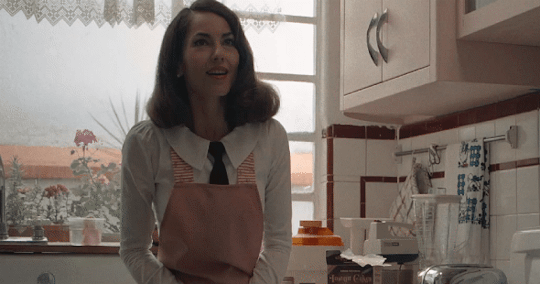


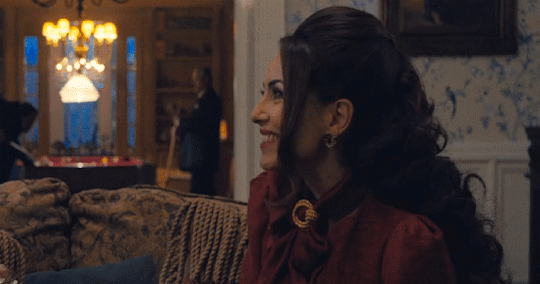


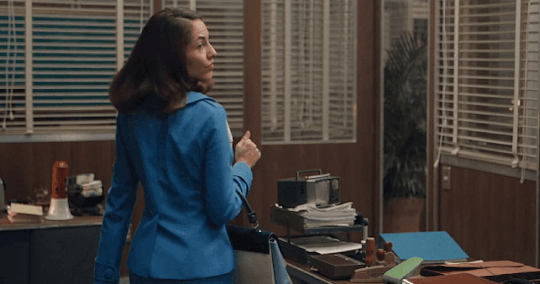


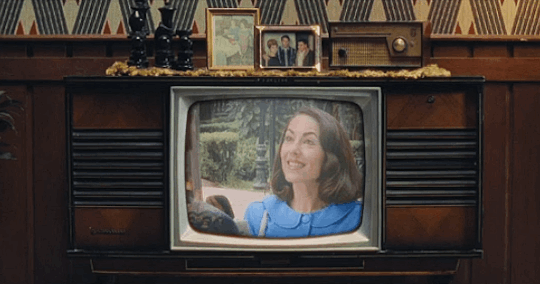
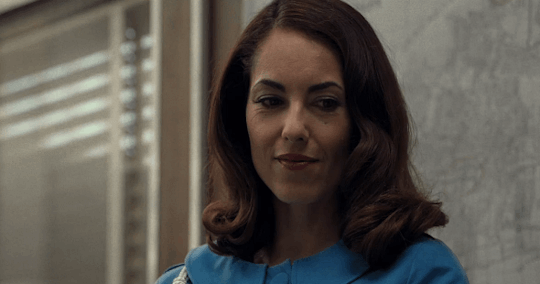

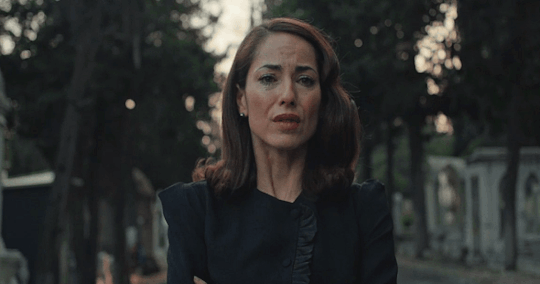
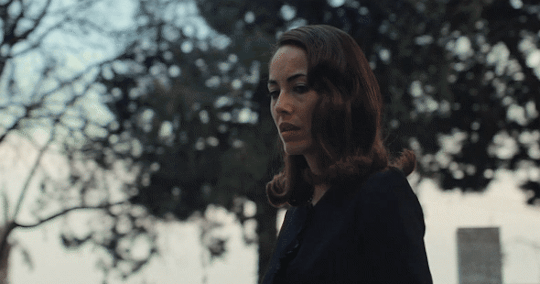
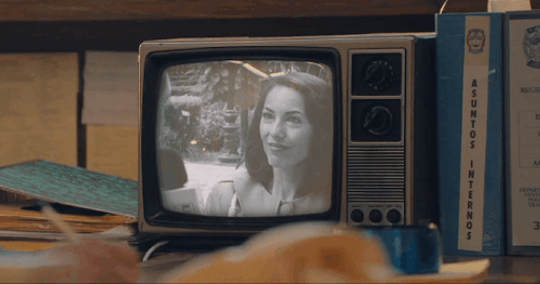
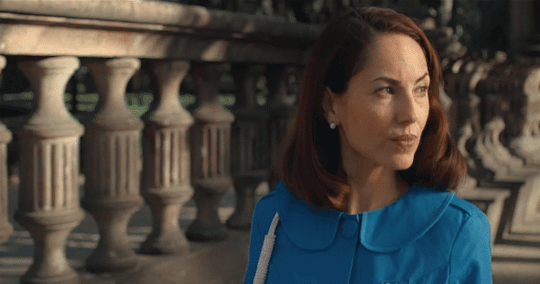
Women in Blue / Las Azules (2024–) | Season 1, Episode 3 | Bárbara Mori as María de la Torre
“The truth is, your actions have consequences. You want to lead them? You have to understand that.”
#cannot gush enough about her <3#women in blue#women in blue 2024#las azules#barbara mori#maria de la torre#appletvsource#myedits#mygifs#dailytvwomen#dailytvsource#dailytvedit#dailywomen#dailywomansource#dailyfemale#currently watching#womensource#brunettesource#thrillers#tv show recommendations#femalesource#dailyactresses#apple tv series#dailywomanedit#cinemapix#dailytvgifs#period drama#perioddramasource#perioddramaedit
19 notes
·
View notes
Text
Maria e a sereia
Em um pequeno vilarejo localizado em uma ilha no mar mora uma linda menininha chamada Maria, menina essa que sonhava em ser uma influenciadora de maquiagem, a mesma adorava explorar a ilha atrás de novas aventuras, sempre descobria algo novo, pois o mar sempre lhe trazia surpresas. Em um certo dia de exploração Maria avistou algo diferente, algo na qual ela não acreditava que existia, com seu celular em mãos foi correndo checar o que era e fazer seus registros, levava um pequeno bloco para desenhar o que achasse também.
Maria cada vez chegava mais perto do que poderia ser seu maior achado, ouvia um som lindo à medida que se aproximava, era como uma canção, foi se aproximando bem devagar, apreciando aquele lindo momento, até que foi descoberta e a criatura fugiu. Maria tentou chama-la muitas vezes, mas foi ignorada, porém ela não desistiu e voltou no dia seguinte mais cedo, levando consigo alguns biscoitos e um copo de suco, deixou perto do mar e esperou, em certo momento a bela voz voltou e saboreou tudo que estava lá, suavemente ela agradeceu e convidou Maria a se aproximar, a menininha então percebeu que era uma sereia linda, sua cauda brilhante de várias cores misturadas em uma, simplesmente magnifica, porém seu rosto não estava tão belo quanto o resto, estava bem suja por conta da poluição do oceano. Nossa aventureira então lembrou do seu sonho sobre se tornar uma grande maquiadora nas redes, pediu para bela sereia voltar amanhã que ela deixaria ela ainda mais bela, como prometido elas se encontraram no dia seguinte, a menininha estava com sua maleta de maquiagem e outros equipamentos para a mesma, começou seus retoques na sereia e começou a fazer o que vinha em mente, enfeitando ela toda, limpando o que era necessário e registrando tudo por fotos e vídeos. Ao final de tudo a sereia olhou seu reflexo num pequeno espelho e se apaixonou por si mesma, agradeceu muito a Maria e lhe disse que seu nome era Aurora e que estava de partida, contou a ela que ouviu a mesma cantarolando sobre seus sonhos e foi a superfície para ajudá-la, lhe disse para postar tudo que haviam feito em suas redes e lhe deixou uma concha de presente, concha essa que continha a mesma música que ela vivia a cantar, uma recordação para o momento mágico que tiveram. Maria voltou para casa e publicou seu dia, foi ganhando cada vez mais seguidores pela sua história e guardou seu novo presente bem ao lado de sua cama, para sempre dormir a ouvindo e lembrar de sua nova amiga mágica.
— Thadeu Torres
#outro-sagitariano-no-mundo#outro-estranho-no-mundo#autorias#autorais#historias da Maria#pequenos contos
10 notes
·
View notes
Text
Waterfolk can be associated with other elements too
While waterpeople are primarily and solely associated with water, some of them bear associations with other elements in terms of the classical elements, namely earth, fire, and air. I will rather dive into this in regards to symbolism.
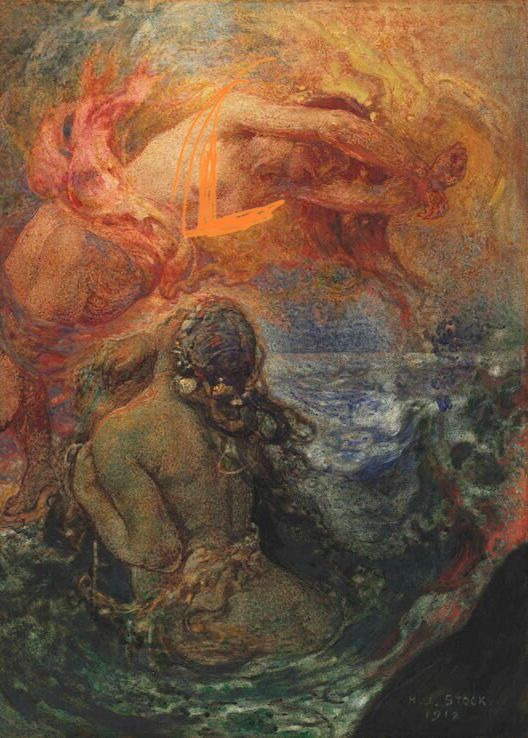
Edited "Fire and the Sea" by Henry John Stock in 1912.
~Fire~
This in general is thought of to be the contradicting element of water. If water and fire is seen side by side, it creates a strong contrast. Red and blue contradict each other in terms of color alongside. However, waterpeople could still bear connections to it. In regards to that, flames tend to have a slight blue tip in terms of color. Warmth and solar associations with waterfolk exist, too.
Maria da Manta from Portugal meaning "Mary of the Blanket", Maria Gancha namely "Mary Hook", Maria Ganta meaning "Mary of the Grid" or as in the Miranese language, Mariamanta, was said to live in wells, having hooks for hands in order to drag the youth in and drown them. While her appearance varied a lot, some would say she possessed eyes made of fire. Source: Maria Gancha - Portuguese Creatures and Legends Galore https://portuguesecreaturesandlegendsgalore.wordpress.com/2020/02/14/maria-gancha/
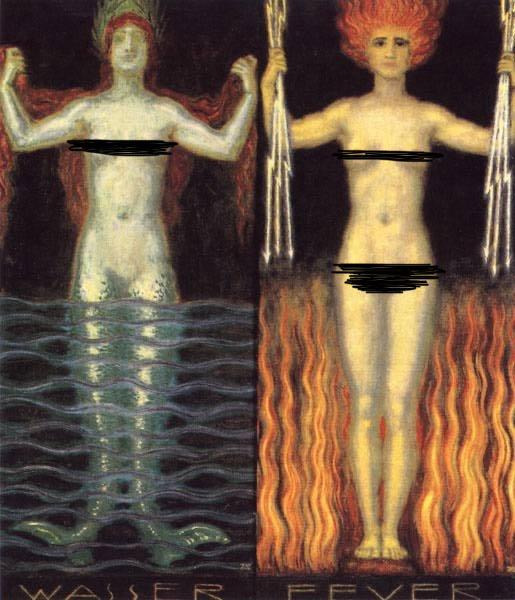
Edited "Wasser und Feuer" by Franz von Stuck in 1913.
Sulis is a humanoid, Celtic goddess from the United Kingdom who is both a water and solar deity. She was closely associated with the hot springs in Bath alongside. Source: Sulis, Goddess of Celtic Mythology | Characteristics & Depictions - Study. com https://study.com/academy/lesson/sulis-celtic-goddess-mythology-history.html?srsltid=AfmBOopQslCH2QEArMfaq5VE7QDgXuMQS3z55jnppUGbVGlpA3E7ldu2.
The Thai sea-maiden spirit called Phi thale ผีทะเล is said to appear as a mermaid or a beautiful woman, luring sailors. Sometimes a Phi Thale takes form as a St. Elmo's fire, basically a weather phenomenon caused by electrical discharges during thunderstorms. It seems to appear like faint luminosity or "fire" on pointed objects. St. Elmo's fire is accompanied by a noise like hissing and crackling. The Phi thale may also be considered to be related to electricity in this regard which is just as contradictory to water as it injures one upon touch in water. Sources: What is a Phi Thale (ผีทะเล)? - PAHUYUTH https://pahuyuth.com/en/glossar/phi-thale/ and Saint Elmo's Fire - Britannica https://www.britannica.com/science/Saint-Elmos-fire
~Air~
This is something all living beings require and thus connect, but not all can fly or go with the winds. While waterpeople are thought of to primarily only reside in water bodies, some were capable of flying. The flying fish is something I associate them with regarding this.
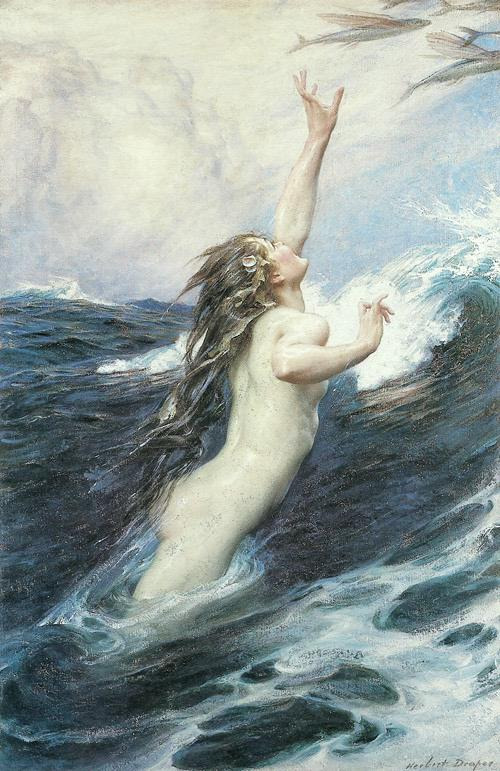
"Flying Fish" by Herbert James Draper in 1910.
One version states that the seirenes of Greek mythology had been the daughters of Achelous, being the naiads of the Achelous river, namely acheloides before being turned into their seiren forms. Usually, they had been depicted with wings and the bodies of birds, luring sailors like they used to. They are an embodiment between the shore and the sea, connecting air and water in terms of symbolism. Source: SIRENS (Seirenes) - Half-Bird Women of Greek Mythology - Theoi Greek Mythology https://www.theoi.com/Pontios/Seirenes.html
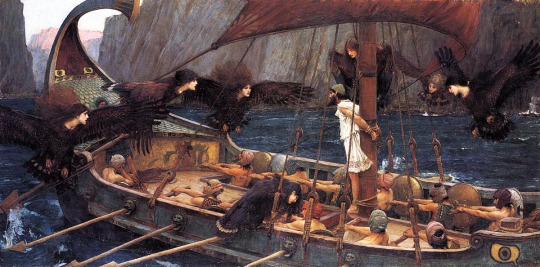
"Ulysses and The Sirens" by John William Waterhouse in 1891.
The Catalan dones d'aigua were described with wings like those of butter- or dragonflies despite living underwater. One of them who lived in the Torre dels Encantats in Caldes d'Estrac would fly and launch herself into the air, only to descend like a bird down to the beach in order to bathe in the sea. Sources: Les dones d’aigua Elisenda Vilaró Móra http://www.elisendavilaromora.com/2012/03/les-dones-daigua/ and Llegenda de la Dona d'Aigua - Adjunament de Caldes d'Estrac https://caldetes.cat/fitxa.php?id=3414
Melusine also grew wings in order to fly away as she felt betrayed.
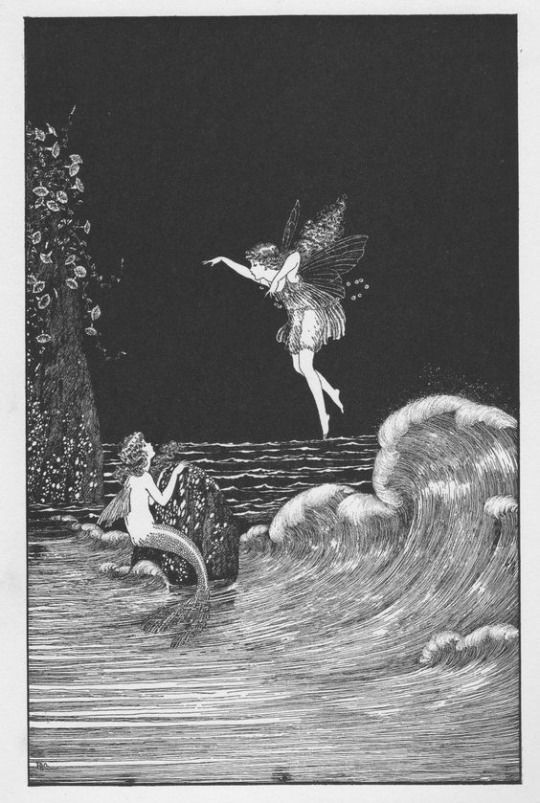
"Little Fairy Sisters" by Ida Rentoul Outhwaite for her "Fairyland" in 1926.
Shapeshifting waterpeople could turn into critters who could fly. For instance, yawkyawks could transform into dragon-flies and the dones d'aigua could turn into water blackbirds.
~Earth~
Almost all waterpeople from the world were capable of shedding their aquatic guise in order to go and venture upon the shore and amidst the forests. Many could shed theirs like the Celtic and Norse selkies, Gurindji karukayn, Irish merrows etc. and some would completely shapeshift in order to go ashore like the Brazilian boto encantado did. Anyhow, some waterpeople did not need to change at all. Water-horse-people like the kelpies could go ashore both in either humanoid or equine form. While some waterpeople were still bound to their aquatic origins, some were not depending on the type of waterperson.
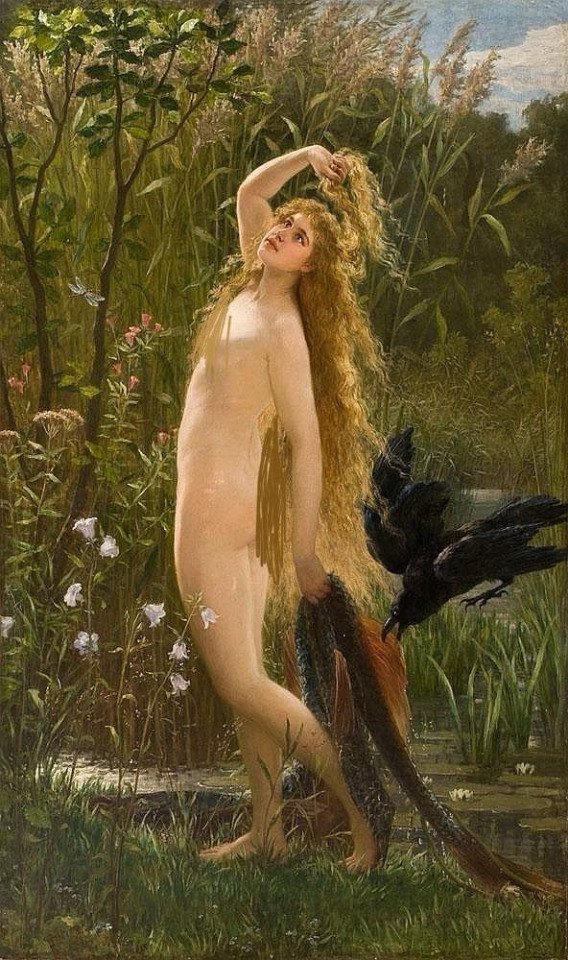
Edited "Das Märchen" by Gustave Graef in 1881.
(If any source is not able to be viewed, consult an archival site)
Thanks for diving into this! :>
19 notes
·
View notes
Text
/|㇏꒰^•ᵥᵥ•^꒱ノ|\
���·····ꐑ···ꐑ···············╮
kinktober 2024
╰····························╯



amphetamine handjob
ᯓ★ Javier De La Torre
piercing the flesh
ᯓ★ Maximus
sixty-nine is the only dinner for two
ᯓ★ Troy Otto
latex love is in
ᯓ★ König
heat wave
ᯓ★ Claire Redfield
like a virgin
ᯓ★ Claire Redfield
strap warming
ᯓ★ Valeria Garza
KNIFE PLAY
ᯓ★ Lucy MacLean
wax play
ᯓ★ Maria
the glory hole confessional
ᯓ★ Adam Faulkner-Stanheight
euphoric lactation
ᯓ★ Troy Otto
i love period sex, i gotta thing for the bleeders
ᯓ★ Claire Redfield
a soothing skin massage
ᯓ★ Mike Munroe
toxic sex through the mirrors
ᯓ★ Simon "Ghost" Riley
fits me like a glove
ᯓ★ Josh Washington
the ultimate seduction
ᯓ★ James Sunderland
ending the night with angry sex
ᯓ★ Amanda Young
sex over the phone
ᯓ★ Adam Faulkner-Stanheight
i love a man in a uniform
ᯓ★ Valeria Garza
6 notes
·
View notes
Text
Solicitudes
Presentación de mi perfil, lo que escribo, reglas.
¡Hola pequeña personita! Me presento, soy deadolloading aún que pueden decirme Joven D, Doll, Dolly o como gustes. Mis pronombres son She/Her/Him, ¡Pero puedes decirme como sea!
Mi blog es totalmente en contenido en español, esto es debido a que no se mucho de inglés y hasta que no lo aprenda en su totalidad, no haré contenido en inglés.
El contenido de mi perfil apunta específicamente a todo lo relacionado con fanfics, pequeños escritos míos, etc. Igualmente los fanfics van del famoso Character x Reader o como el famoso Character x T/N.
Personas de cualquier edad, genero, creencia o nacionalidad ¡Es completamente bienvenido! Ya que mi contenido va para todo público ya que me incomoda escribir cualquier cosa NSFW, por lo que todo mi contenido es SFW, en caso de ser lo contrario se pide que no interactúen con esa publicación.

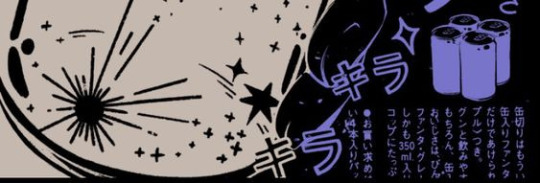

Requests are open!
Lea esto antes de solicitar cualquier fanfic, headcanon y esas cosas (ㅅ´ ˘ `)
Nota: A veces no puedo publicar mucho debido a lo ocupado que suelo estar.
Soy muy imaginativo con headcanons, escenarios/drabbles y es posible que veas mucho de eso en mi perfil, pero nada de fanfics o one-shots y tendrás que esperar mucho tiempo para que haga uno.
Por favor, no envíe hagas spam de solicitudes porque en esos caso no lo haré.
Si no publico un post muy largo, puede ser porque no tengo mucha imaginación en ese momento, disculpas de antemano.
¡El inglés no es mi primer idioma! Así que lo siento mucho por lo que solo escribiré en español.
Cuando pida algo en mi bandeja, por favor dame detalles de lo que quieres, como una parte específica que desea que agregue, qué personaje, género del lector, etc.
Solo puede escribir de 2 a 3 personajes a la vez.
Quiero que este lugar sea seguro tanto para mí como para los lectores.
Tengo todo el derecho a rechazar una solicitud, especialmente si rompe con las reglas que ya tengo.



Acepto escribir
Relaciones poliamorosas.
Dolor/comodidad.
Pelusa.
Amor, oc x character
No acepto escribir
Incesto
Sexo/NSFW
Violencia
Pedofilia, zoofilia
Relaciones altamente tóxicas



Fandoms y personajes para los que escribo !
Videojuegos
Phantom of the Opera - MazM
Christine Daae Sorelli Dupont Melek Levni Detective Hatim Eric
Genshin Impact
Sucrose Rosaria Beidou Amber Kaeya Diluc Jean Aloy Lisa
Mario Bros
Princess Peach Princess Daisy Rosalina Pauline Mario Luigi
Cuphead
Baroness Von Bon Bon Chef Saltbaker Cala Maria Hilda Berg
Five Night's at Freddy's
Michael Afton William Afton Henry Emily Clara Afton Animatronics
Sims 4
Elvira Lapida
Series/Anime/ARG
The Mandela Catalogo
Cesar Torres Mark Heathcliff Adam Murray Jonah Marshall Arcangel Gabriel Alt!Archangel Gabriel Sarah Heathcliff
Popee the Performer
Papi Poppe Eepop Kedamono
Kimetsu no Yaiba
Tanjiro Kamado Nezuko Kamado Inosuke Hashibira Zenitsu Agatsuma Muzan Kibutsuji Kagaya Ubuyashiki Kyōjurō Rengoku Obanai Iguro Gyomei Himejima Tengen Uzui Shinjuro Rengoku Mitsuri Kanroji Shinobu Kochō
Welcome Home
Wally Darling Julie Joyful Barnaby B. Beagle Frank Frankly Eddie Dear Howdy Pillar Sally Starlet Poppy Partridge
My Hero Academia
Kyoka Jiro Eijiro Kirishima Denki Kaminari Mei Hatsume Mt. Lady Tsuyu Asui Tenya Iida Endeavor Ochako Uraraka Momo Yaoyorozu
Sakura CardCaptor
Tomoyo Daidōji Tōya Kinomoto Yukito Tsukishiro Maki Matsumoto Nadeshiko Kinomoto Syaoran Li Fujitaka Kinomoto Kaho Mizuki Sakura Kinomoto Clow Reed Caras Clow
Sailor Moon
Usagi Tsukino Rei Hino Makoto Kino Ami Mizuno Minako Aino Haruka Teno Michiru Kaio Setsuna Meio Nephrite Mamoru Chiba/Tuxedo Mask Kou Seiya Kou Yaten Kou Taiki
Dragon Ball
Gohan Veggetta Piccolo Trunks Broly Androide 18 Androide 17 Whis Krilin
Scooby-Doo
Vilma Dinkley Daphne Blake Shaggy Rogers Fred Jones
A Series of Unfortunate Events
Montgomery Montgomery Violet Baudelaire Klaus Baudelaire Georgina Orwell Justice Strauss Fernald Fiona Kit Snicket Lemony Snicket Gustav Sebald
Marvel/DC Comics
Solo agregare unos personajes
Doctor Octopus - Spiderman Miguel O'Hara - Spiderman Ghost Spider - Spiderman Spider-Man Noir - Spiderman Doctor Stranger - Marvel Peggy Carter - Marvel Raven - DC Comics Starfire - DC Comics Beast Boy - DC Comics Green Arrow - DC Comics
Moral Orel
Bloberta Puppington Clay Puppington Rod Putty Stephanie Putty Nurse Bendy
The Amazing Digital Circus
Ragatha x Reader Pomni x Reader Caine x Moon Caine x Reader Jax x Reader Gingle x Reader
Otros personajes (serie o película)
Miss Peregrine - Miss Peregrine y el hogar para chicos peculiares Carrie - Carrie 1976 Michael Myers - Halloween Jason Voorhees - Viernes 13 Thomas Hewitt - Masacre en Texas 2006 Ghostface - Danny Johnson Phantom of the Opera - Movie 2004 Blue Diamont - Steven Universe Yellow Diamond - Steven Universe Personajes de Disney - Solo si lo conozco



⠀⠀ ⠀ Reglas ⛧ ?!
ㅤㅤ⛧ Especificar por favor lo que quieren, no soy adivina. Si quieren cierta situación especifica, ese tipo de cosas ya saben.
ㅤㅤ⛧ Al momento de escribir para lectores, lo diré de una vez, no se mucho de pronombres. Por lo que si quieres de un personaje no binario o algo así, por favor dime como es su uso de pronombres para escribirlo y te sientas cómodo.
ㅤㅤ⛧ Esto totalmente abierta a la idea de escribir OC x Character, para eso pido que en privado me den algo de información de su oc. Alguna ficha, descripción de personalidad y física, ese tipo de cosas.
ㅤㅤ⛧ Pido que me tengan paciencia, suele escribir de forma muy tardada debido a mi gran bloqueo de escritor. Ténganme paciencia, soy nuevo en esto :').
ㅤㅤ⛧ ¡Pueden pedirme cualquier cosa! Romance, platónico, relación padre/madre e hijx, de hermandad, etc.
ㅤㅤ⛧ Por favor, pido respeto ya que esto es como un tipo de pasatiempo para mi. No vengo a molestar a nadie y tampoco vengo a que me molesten. Si no les gusta mi perfil o tienes problemas conmigo, te pido amablemente que dejes mi perfil y con gusto puedes bloquearme.



Eso sería todo por mi parte, bienvenidos a mi perfil y espero que les guste mi contenido.
¡Nos vemos!
#character x reader#español#spanish fanfic#fanfic#phantom of the opera#mario bros#cuphead#five nights at freddy's#sims 4#the mandela catalogue#poppe the performer#kimetsu no yaiba#kimetsu academy#welcome home#sakura card captor#sailor moon#dragon ball#scooby doo#asoue x reader#a series of unfortunate quotes#spiderman#disney#disney x reader#princess daisy x reader#william afton x reader#the amazing digital circus#pomni x reader#ragatha x reader#caine x moon
55 notes
·
View notes
Text










María Fernanda Yepes – Maxim México Febrero 2017
February 2, 2017, 7:16 pm
Ser actriz le significo vivir en constante prueba y error. Hoy consolidada en este camino, pone a la luz sus secretos espirituales, aficiones y planes para el mañana.
María Fernanda Yepes llega caminando al corazón de la Ciudad De México. Lleva puestos unos jeans deslavados, camiseta blanca y unas sandalias de piel. Las manos las tiene ocupadas: bolso personal, una maleta y la jaula en la que transporta a alaska, su minina de pelaje blanco.
Despues de saludarla, la ayudamos con sus artículos personales y subimos las escaleras de Barrio Alameda hasta el Chaya, un bed & breakfast con una vista increíble, hospitalidad y espacios acogedores. Al abrir cortinas y ventanas de la master suite, se deja ver la Torre Latinoamericana, un poco de Vegetación y mucha historia.
Maria Fernanda radica en tierras aztecas para participar en La Piloto, serie de Univisión que comenzó a grabarse en septiembre y estará lista en estos días. Ahí interpreta el papel de Zulima.
Desde hace unos años, yepes es una actriz con gran demanda, lo cual la llevó a salir de Colombia; sin embargo, confiesa: “La verdad, me costo mucho tiempo descubrir para que era buena y cuál era mi camino en la vida”.
Primero fue modelo, desde muy pequeña, a los 14 años empezó a trabajar para varias marcas en Medellín, como garotas y el primer catálogo de Agua Bendita.
7 notes
·
View notes
Text
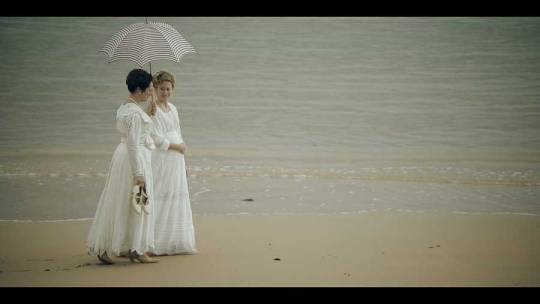
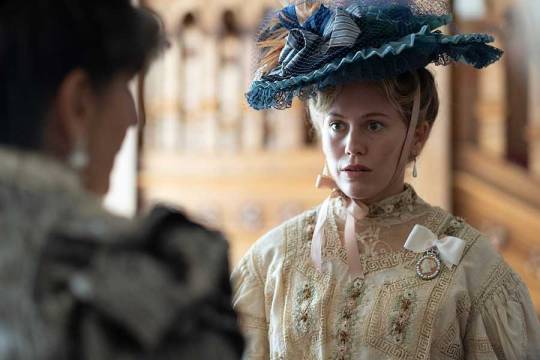


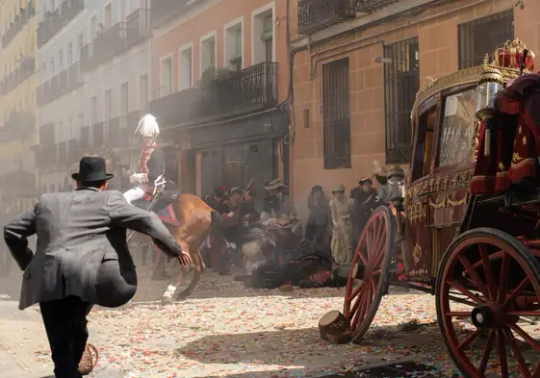
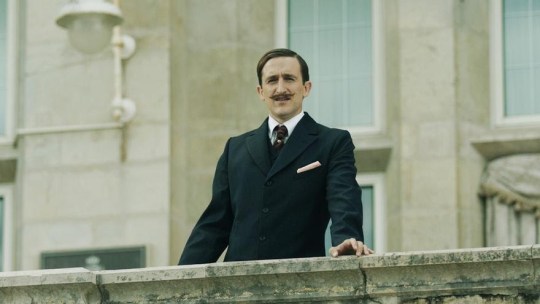


Upcoming series: Ena
In September, the filming of Ena began, a biographical series that will focus on the life of Victoria Eugenie of Battenberg, queen of Spain through her marriage to Alfonso XIII between May 31, 1906 and April 14, 1931, after being the monarchy deposed later by the proclamation of the Second Republic. Great-grandmother of the current king Philip VI of Spain, of whom she was godmother at his baptism. Throughout six chapters, the series will tell the life of Victoria Eugenie and at the same time offer a portrait of a time that changed the world, the first half of the 20th century, from 1905 to 1945. Born on October 24, 1887 in Aberdeenshire, Scotland, Ena was the daughter of Henry of Battenberg and Princess Beatrice, youngest daughter of Queen Victoria of the United Kingdom and Prince Albert of Saxe-Coburg and Gotha. Her godmother was Eugenia de Montijo, empress consort of France as Napoleón III's wife. The name of the series comes from what her friends and family called her since she was little, Ena.
The fiction is based on the novel of the same name by Pilar Eyre. Javier Olivares, who was behind the acclaimed Isabel and El Ministerio del Tiempo, will be the showrunner and plot manager for Ena. In addition to Olivares, the script is written by Isa Sánchez, Daniel Corpas and Pablo Lara Toledo. The series will be directed entirely by women: Anaïs Pareto, director of the series as a whole, in addition to four episodes, and Estel Díaz, who will direct two episodes.
“Ena is the portrait of historical moments that seem distant but are not so far away, because without them we would not understand the times we live in now,” Olivares declares in the press release sent by TVE. The writer and screenwriter remembers that Victoria Eugenie “fought to be happy in a bitter time, in which she witnessed two world wars, a civil war and a great pandemic, the tortuously called Spanish flu.”
For Pilar Eyre, author of the novel, she was "an extraordinary woman: cultured, supportive, liberal-minded, modern and very loyal." And she is excited because "finally all Spaniards can know" the story of a "misunderstood" woman. in their time, which they will always consider foreign." It is a fiction co-produced by RTVE with Ena La Serie AIE, La Cometa TV and Zona App. José Pastor, director of Film and Fiction at RTVE, has pointed out that "it is a "RTVE is proud to be able to portray this interesting historical character, from the point of view of two women directors and with Javier Olivares as showrunner, in one of its best series."
The Spanish actress of Anglo-Danish descent Kimberly Tell will play Ena and Joan Amargós will play Alfonso XIII. For her part, Elvira Mínguez will play Maria Christina von Habsburg-Lothringen, mother of Alfonso XIII. The cast is completed by Lucía Guerrero (Beatrice of Saxe-Coburg and Gotha), Raúl Mérida (Alfonso of Orleans and Bourbon), Juan Gea (Álvaro Figueroa y Torres, Count of Romanones), María Morales (María del Carmen Angoloti y Mesa, Duchess of Victoria), Pedro Mari Sánchez (Rodrigo de Saavedra y Vinent, Marquis of Villalobar), Luisa Gavasa (Eugenia de Montijo) and Joaquín Notario (José de Saavedra y Salamanca, Marquis of Viana)
Mariano Peña will play Miguel Primo de Rivera; Jaume Madaula will play the anarchist Mateo Morral, author of the attack committed at the royal wedding; Tomás del Estal will be Emilio María de Torres y González-Arnáu, and Ángel Ruiz will once again give life to Federico García Lorca, a character he already played in El Ministerio del Tiempo, among others.
The series will be filmed entirely in natural exteriors and interiors, like the Royal Palace of Madrid, the Palace of La Granja de San Ildefonso (Segovia), the Palace of Santoña (Madrid), the Palace of Fernán Núñez (Madrid), the Fort of San Francisco (Guadalajara) and the Magdalena Palace (Santander), built in 1911 by the City Council as a tribute to the monarchs and where Ena spent a good part of her summers in Spain, accompanied by the Royal Family. Filming for the series will continue until the end of December.
~~~~~~~~~~~~~~~~~~~~~~~~~~~~~~~~~~~~~~~~~~
So, the Magdalena Palace is going to be an important location during the series as a summer palace, the main filming location in Gran Hotel, and in that series Ena appeared in the episode 3×13, played by Aída Filx.
Apart from that, are we getting an Olivaresverse (XD)? Most likely not, and it's just references about his previous works as a showrunner, but there are connections between Isabel, Emdt and Ena: Michelle Jenner starring Isabel as Isabella I of Castile, then appearing in a couple of scenes in Emdt episode 1×04 and being an important figure in the lore as the foundress of the ministry (& Eusebio Poncela playing as Cisneros in both series, and also he played Cisneros in the film La Corona Partida and the Carlos Rey Emperador series); Alfonso XIII is a descendant of Isabella I of Castile; Ángel Ruiz appeard as Lorca in Emdt in 4 episodes and now he is on Ena playing as Lorca again, we don't know yet how much screentime he will get or which will his role be (secondary character most likely), but it's great to see more about him!
#Ena#period dramas#upcoming series#ena tve#victoria eugenie of battenberg#maria christina von hasburg#alfonso xiii of spain#kimberley tell#joan amargós#rtve series#pilar eyre#javier olivares#anaïs pareto#estel diaz#federico garcía lorca#ángel ruiz#elvira míngez#maria christina von hasburg-lothringen#lucía guerrero#beatrice of saxe-coburg and gotha#raúl mérida#alfonso of orleans and bourbon#juan gea#álvaro figueroa y torres#maría morales#maría del carmen angoloti y mesa#pedro mari sánchez#rodrigo de saavedra y vinent#luisa gavasa#eugenia de montijo
21 notes
·
View notes